Source: “1905 Biological Survey of Texas” by Vernon Bailey, “Yearbook on Texas Conservation of Wildlife 1929-30”, p. 23-24, & Texas Game and Fish Magazine – February 1946
The Goldthwaite jaguar is one of the most northerly and well-known jaguars in Texas history. The harrowing story of Homer Brown’s hunt that killed this big cat (and some of his dogs and a horse) is the stuff of Texas legend. Vernon Bailey has the most thorough account of the encounter in his 1905 “Biological Survey of Texas”. It includes a letter from Mr. Brown as well as additional details from H.P. Attwater, a naturalist who documented the cat.
Last fall I heard that a jaguar had been killed near Goldthwaite, in Mills County, north of the Colorado River, in west central Texas, and wrote to parties in that section for particulars, but with poor satisfaction. So I made up my mind to go there the first opportunity for the purpose of getting at the facts.
H.P. Attwater
An issue of Texas Game and Fish Magazine from 1946 retells the story of the hunt and includes a photo of the hunters and the jaguar. Attwater and Brown’s full account of “the battle,” as they called it, is included below.
One interesting detail that Attwater recorded was that a second jaguar was seen in the area some time after the hunt. He believed it to be a mate, but a male jaguar would have been traveling alone. Could the jaguar population have simply been larger than imagined at the time?
Whenever a jaguar was documented in Texas there was a refrain that it must have “strayed there” from Mexico. Never was there any acknowledgment that these cats had lived in Texas for millennia and had only recently been driven out by trappers. Jaguars were documented along the Pecos River basin in 1901 and 1915, so it is possible that the Goldthwaite jaguar was one of the last cats born in Texas.
“The Yearbook on Texas Conservation of Wildlife 1929-30” by the Texas Game, Fish and Oyster Commission has a similar tone and includes a photo of Homer Brown with the jaguar outside the Mills County courthouse.
This tropical beast, though receding before the advance of civilization, may at any time cross into Texas from Mexico, where it persists in considerable numbers.
“The Yearbook on Texas Conservation of Wildlife” 1929-30
The Goldthwaite jaguar’s skull is still housed in the Smithsonian collections. It would be amazing to display it in Texas someday. For now, I like to hike Colorado Bend State Park and imagine jaguars still prowling the canyons and riverbanks.
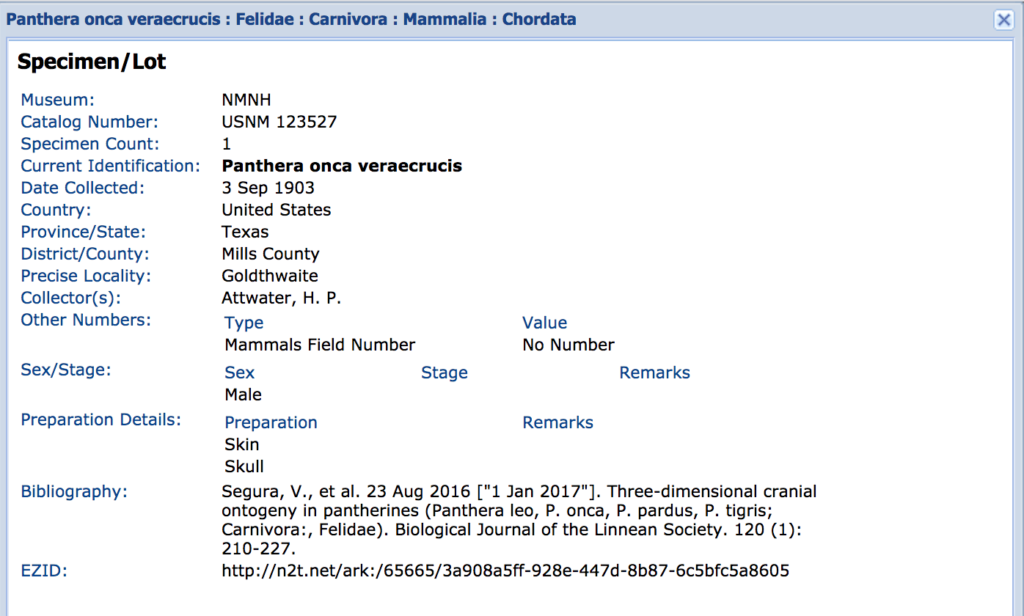
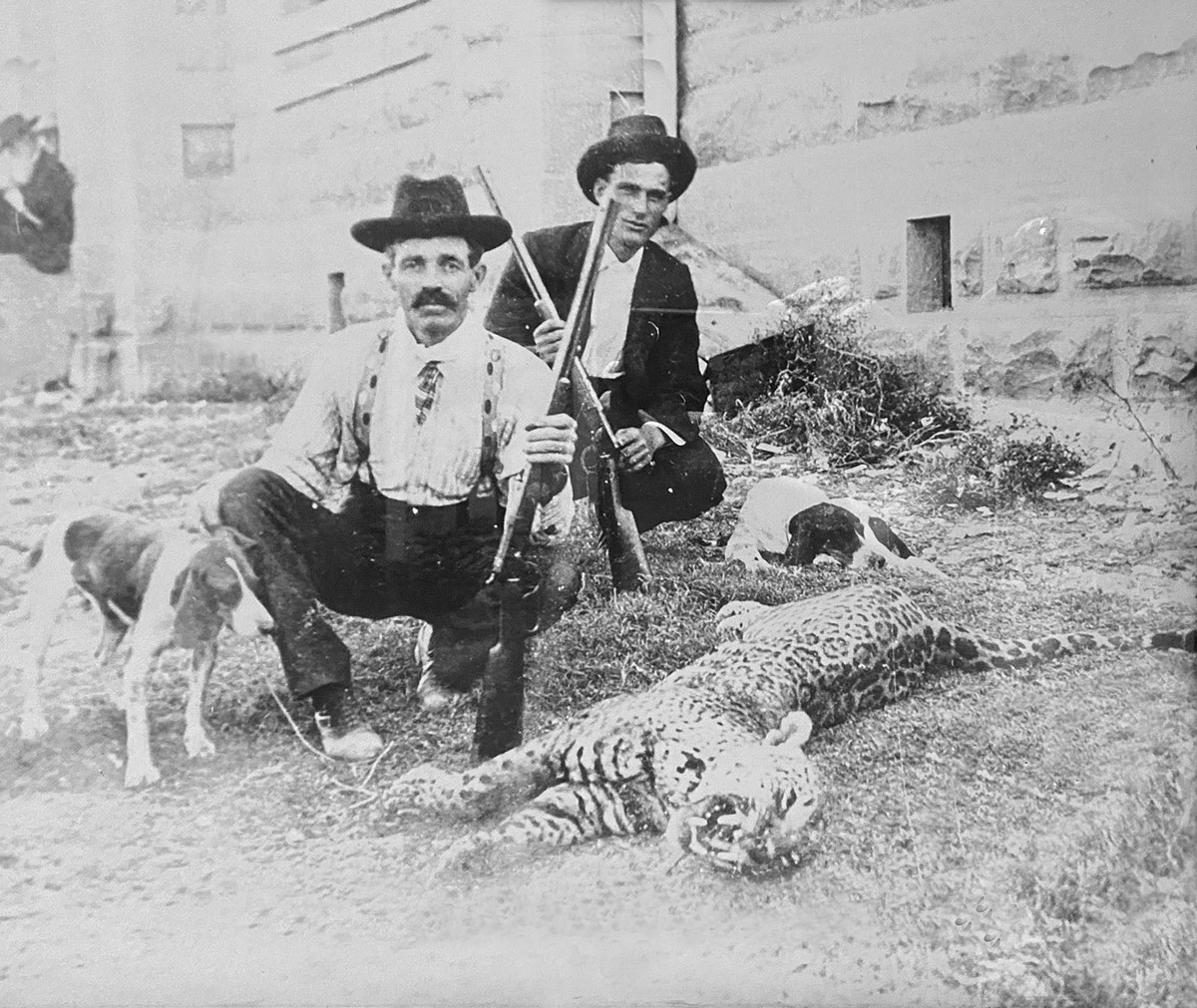
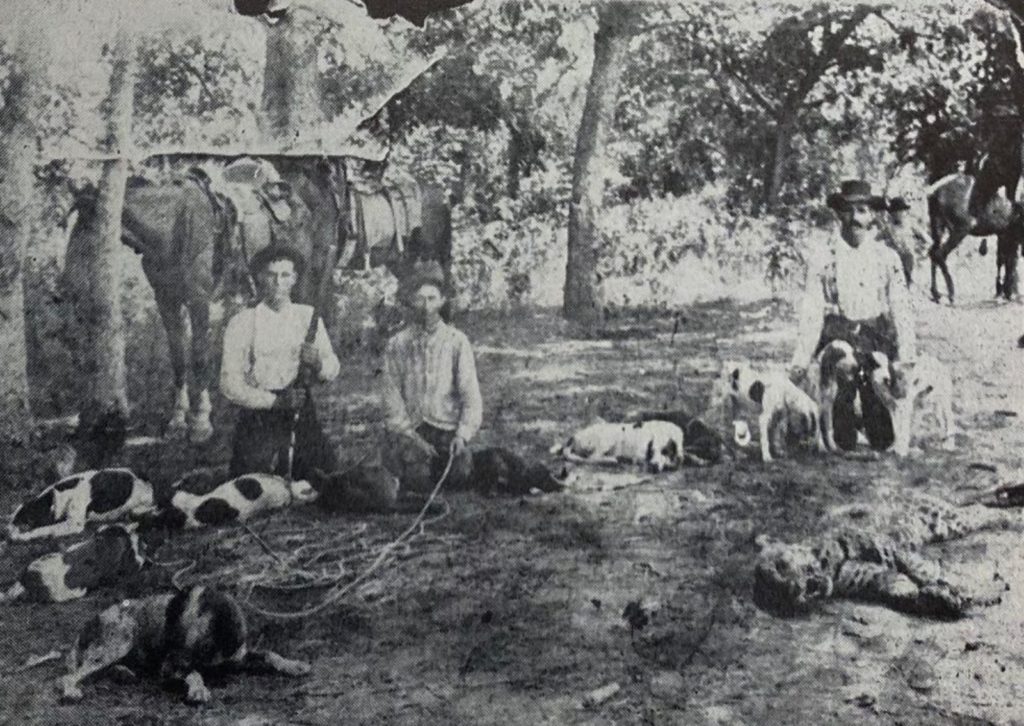
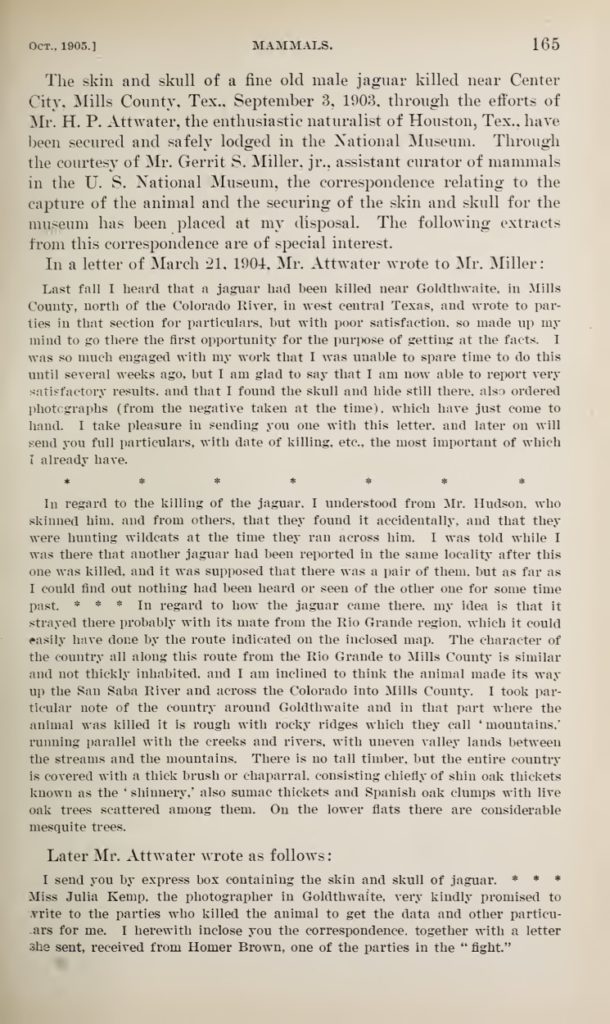
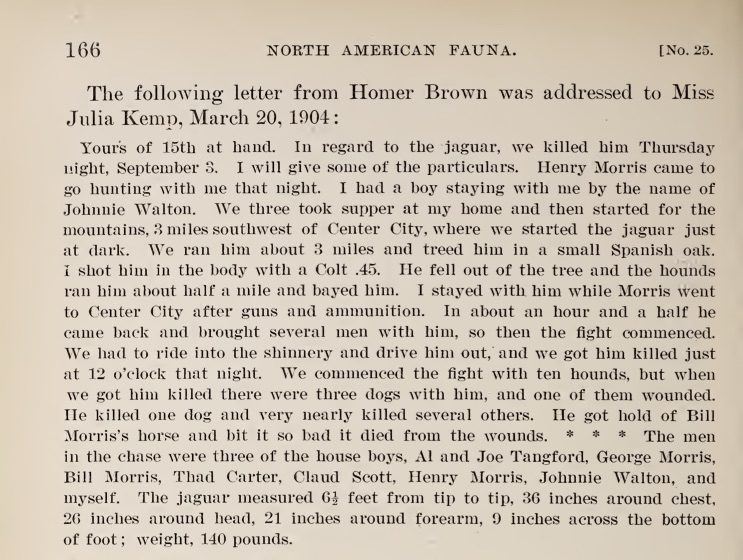
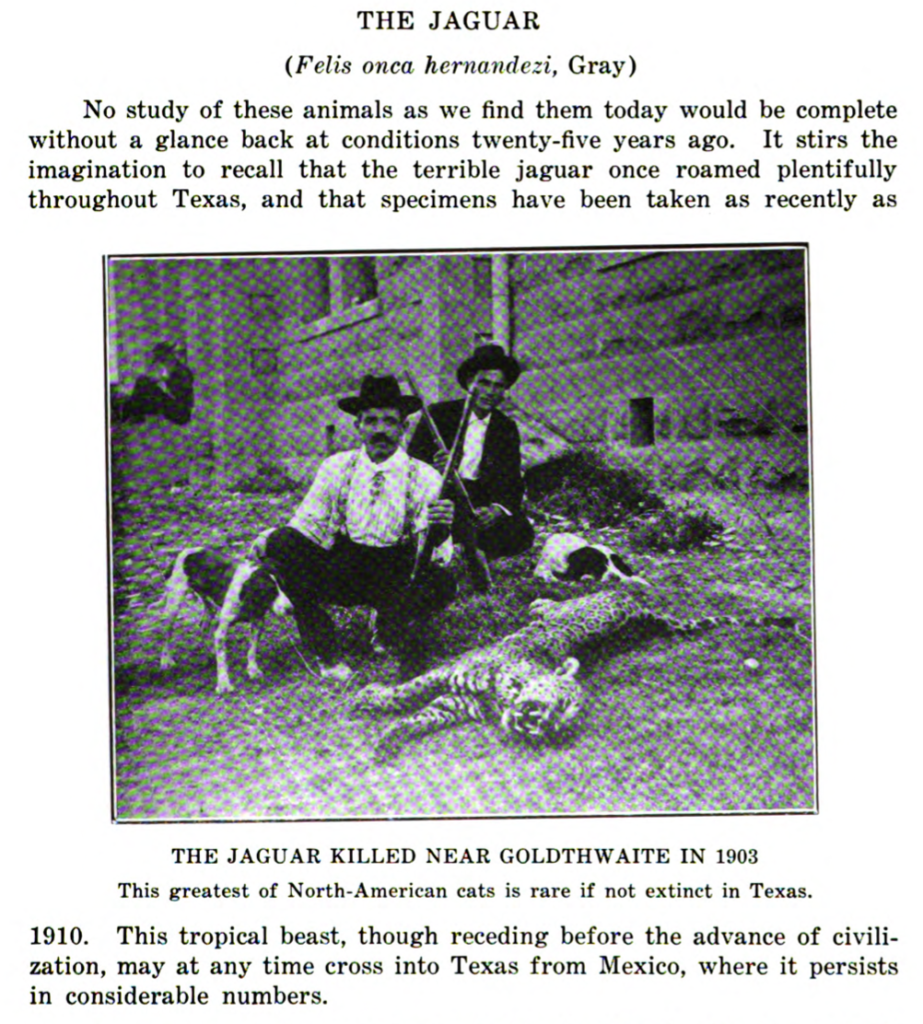
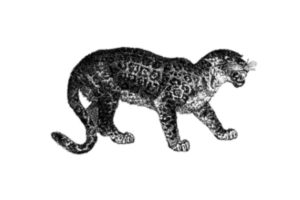
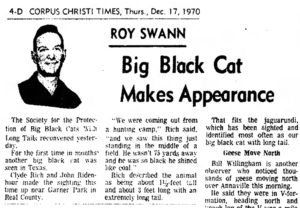
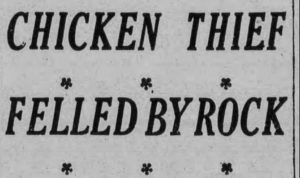
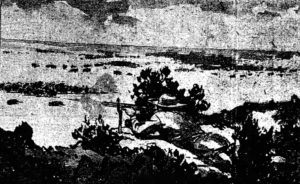
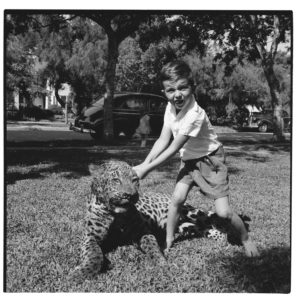
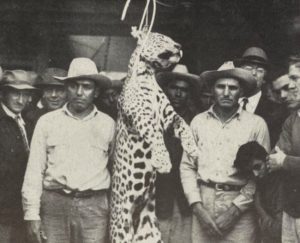
Comments are closed.